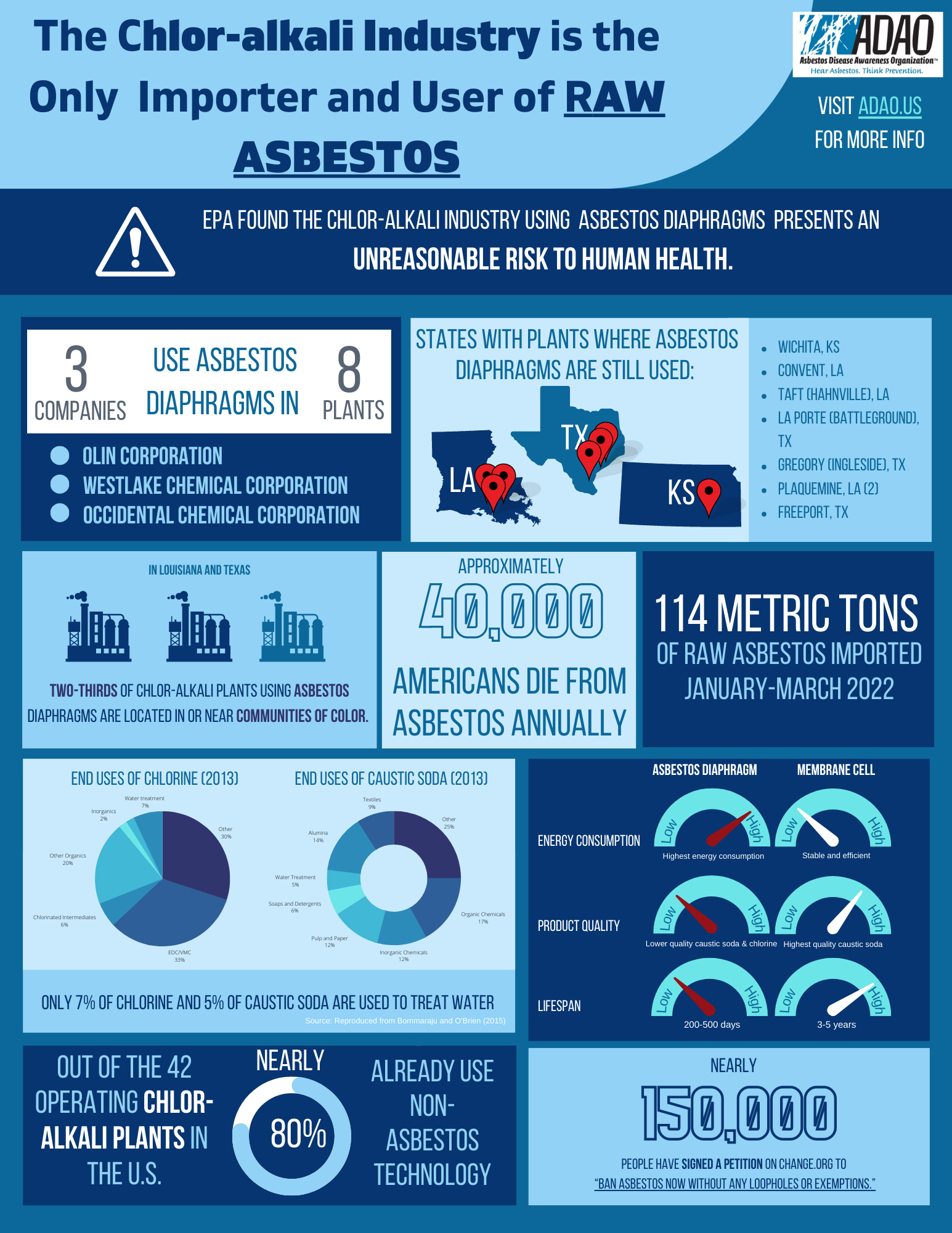Posted on August 23, 2022
2022 New ADAO Chlor-Alkali Industry infographic
ADAO is pleased to share our new chlor-alkali infographic with you. We hope you will join our education and advocacy efforts by sharing it widely in your communities! Depicting research from the Environmental Protection Agency (EPA) Economic Analysis, the United States Geological Survey (USGS), and the International Trade Administration (ITA), we designed this infographic to better communicate the impacts of asbestos importation and use by the chlor-alkali industry. 
The EPA noted in their Part 1 Chrysotile Asbestos Risk Management Rule that the use of chrysotile asbestos by the chlor-alkali industry poses unreasonable risks to human health. Despite the fact that approximately 40,000 Americans die from asbestos annually, the chlor-alkali industry has imported 114 metric tons of raw asbestos within the first three months of 2022, an amount that exceeded the total amount of asbestos imported in 2021.
Currently, there are only three corporations, Olin, Westlake Chemical, and Occidental Chemical, that use asbestos diaphragms in 8 plants to produce industrial chlorine and caustic soda. The plants using asbestos diaphragms are located in the following cities:
- Wichita, Kansas
- Convent, Louisiana
- Taft (Hahnville), Louisiana
- Plaquemine, Louisiana (2)
- La Porte (Battleground), Texas
- Gregory (Ingleside), Texas
- Freeport, Texas
Two-thirds of the plants using asbestos diaphragms are located in or near communities of color that suffer disproportionately high cancer risks from toxic releases. It is crucial that we raise awareness in these areas and across the nation as we hold industry accountable.
The chlor-alkali industry often uses the narrative that an asbestos ban would have negative impacts on caustic soda and chlorine production which are used in water treatment processes; however, reports show that only 5% of caustic soda and 7% of chlorine produced is used to treat water. Their narrative is more of a fear-mongering technique instead of an argument based on the data.
Thanks to technological advances, non-asbestos diaphragms and membrane cells have a longer lifespan and produce a higher quality product than asbestos diaphragms. Non-asbestos diaphragms also consume less energy than asbestos diaphragms, making them a more stable and efficient alternative. Nearly 80% of operating chlor-alkali plants in the U.S. have already transitioned to using non-asbestos technology. It’s time for these three corporations to get on board and prioritize putting public health over profits.
While the EPA has proposed a ban on one of six types of asbestos fibers and six conditions of use, there are still five other fibers and numerous uses that pose a potential threat to public health.
Help us raise awareness about the dangers of importing and using asbestos and the chlor-alkali industry by sharing this infographic in your communities and on social media. You can also join nearly 150,000 others by signing our petition to congress to ban asbestos without loopholes or exemptions. Together we make change happen.
Linda Reinstein
